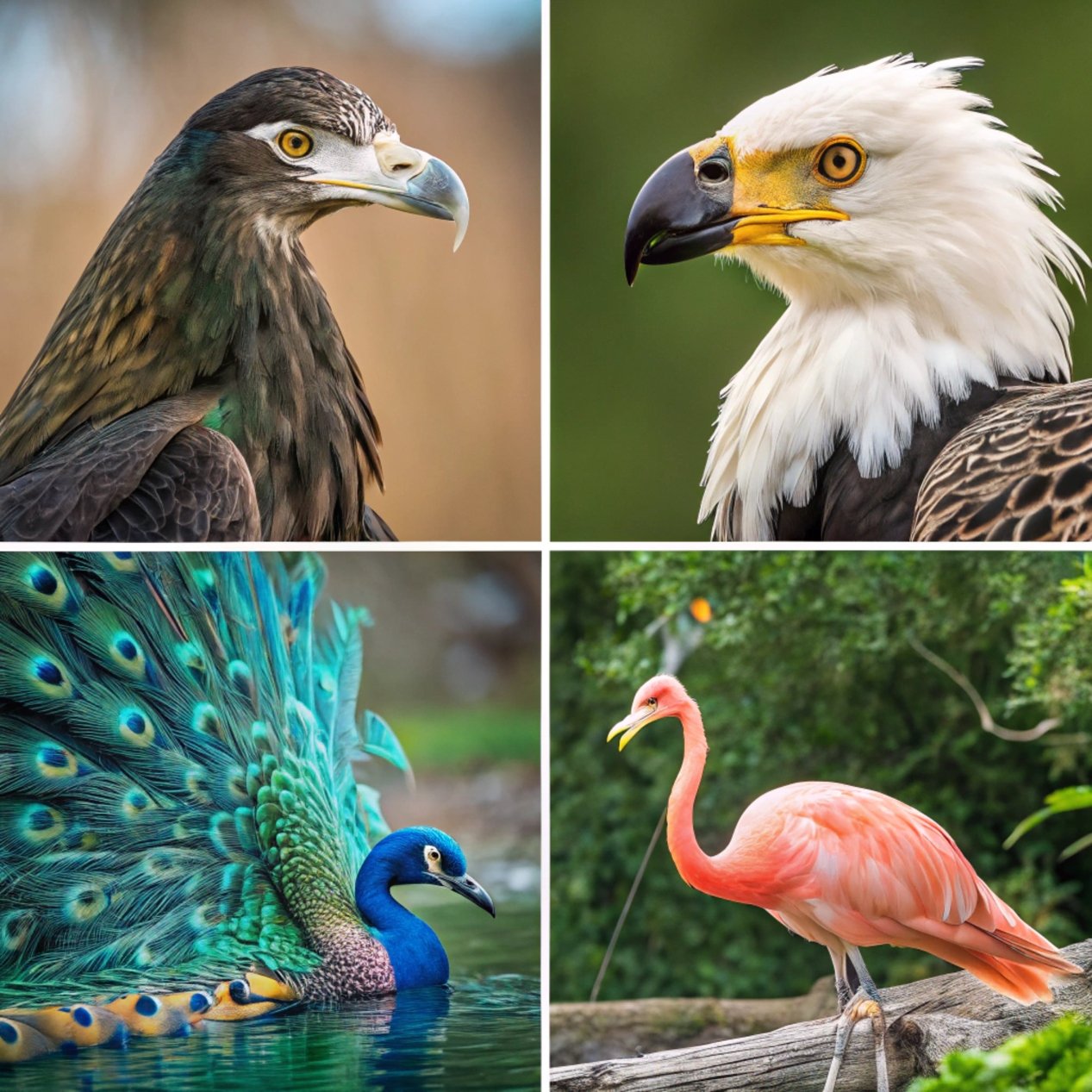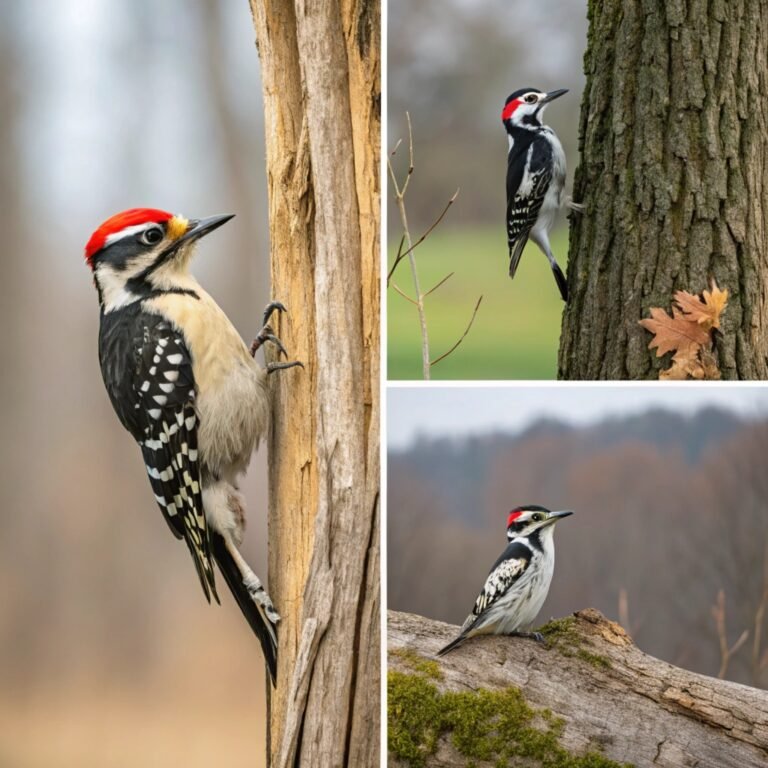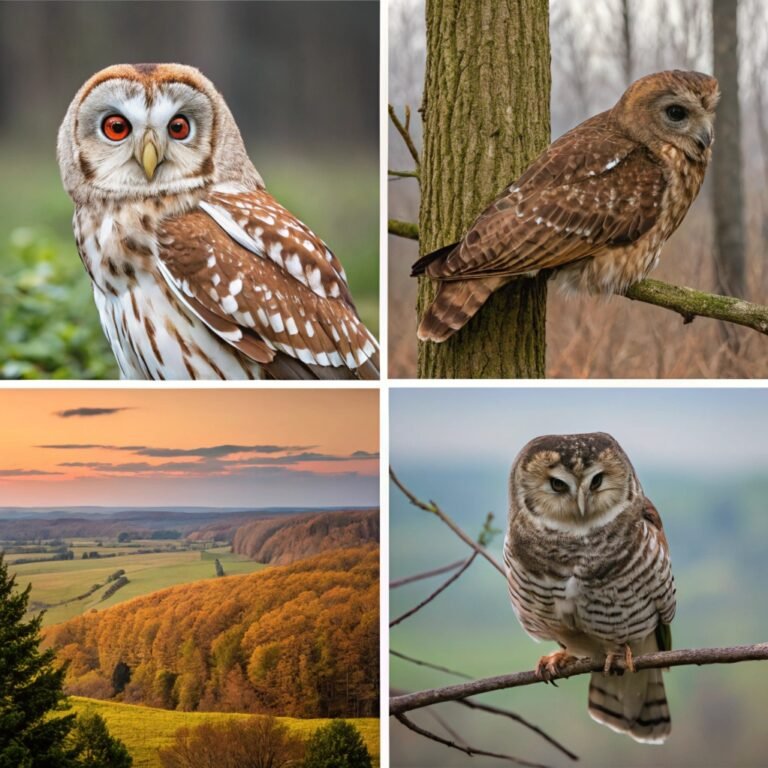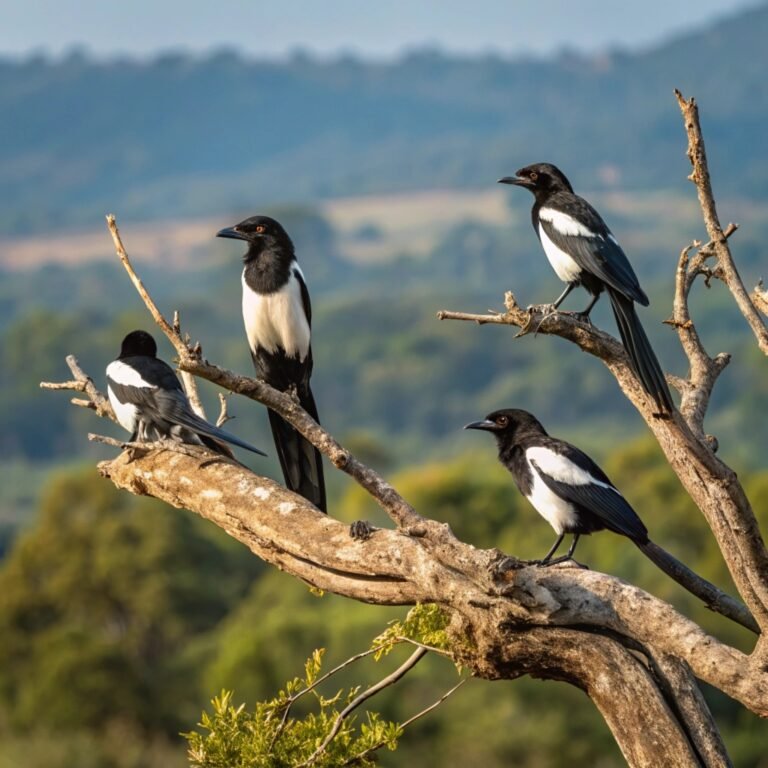10 Fierce and Impressive Bird Species That Rule the Skies: Unveiling the Feathered Titans
The avian world is home to a diverse array of species, each with its own unique adaptations and characteristics.
Among these feathered creatures, some stand out for their fierce nature and impressive attributes.
In this comprehensive exploration, we’ll delve into the lives of ten remarkable bird species that have captured the imagination of bird enthusiasts and researchers alike.

Key Takeaways:
- Harpy Eagles reign supreme as the most powerful eagles, capable of breaking human bones with their grip
- The African Crowned Eagle can hunt prey up to 35 kg, showcasing its exceptional strength
- Lappet Faced Vultures boast an impressive 3-meter wingspan and are known for their aggressive behavior
- Black Swans form lifelong monogamous bonds and are unique to Australia
- The Emu, Australia’s tallest bird, can reach speeds of up to 50 km/h despite being flightless
- Laughing Kookaburras have a distinctive call that resembles human laughter
- The extinct Paradise Parrot serves as a reminder of the importance of conservation efforts
- Pied Butcherbirds impale their prey on thorns and engage in cooperative breeding
- Andean Geese have adapted to survive in harsh, high-altitude mountain habitats
- Common Ostriches dominate the savanna habitat as the largest living bird species
The Harpy Eagle: A Formidable Predator of the Rainforest

The Harpy Eagle stands out as one of the most powerful and impressive birds of prey in the world.
With a weight of up to 9 kg and a wingspan measuring 2 meters, these raptors are truly awe-inspiring.
Their relatively shorter wingspan, compared to other large birds, is an adaptation that allows them to maneuver effectively in densely forested habitats.
What sets the Harpy Eagle apart is its incredible strength. Their talons are exceptionally long, and their grip is so powerful that it can break a human’s arm.
This formidable predator primarily hunts sloths, monkeys, and large birds, showcasing its dominance in the rainforest ecosystem.
The African Crowned Eagle: A Skilled Hunter of the Tropics

Residing in the rainforests of tropical Africa, the African Crowned Eagle is a raptor that commands respect.
Despite its relatively modest wingspan of 2 meters, this bird of prey can hunt animals weighing up to an astonishing 35 kg. This feat is made possible by its incredibly strong talons, which have been known to crush the skulls of monkeys.
The African Crowned Eagle’s diet is diverse, including prey such as Guinea fowl, hyraxes, agwantibos, chevrotains, and small antelope. Its hunting prowess and adaptability to the dense rainforest environment make it a top predator in its habitat.
The Lappet Faced Vulture: A Dominant Scavenger

The Lappet Faced Vulture is a bird that matches the American Condor in size, boasting an impressive wingspan of 3 meters and weighing up to 14 kg.
These large birds of prey are found in African savannahs and Arabia, where they play a crucial role in the ecosystem as scavengers.
However, Lappet Faced Vultures are not limited to carrion. They are known to actively hunt, killing gazelles, antelopes, and even flamingos.
Their aggressive nature extends to their behavior around carcasses, where they often drive away other predatory animals to claim the food for themselves.
The Black Swan: Australia’s Elegant Water Dweller
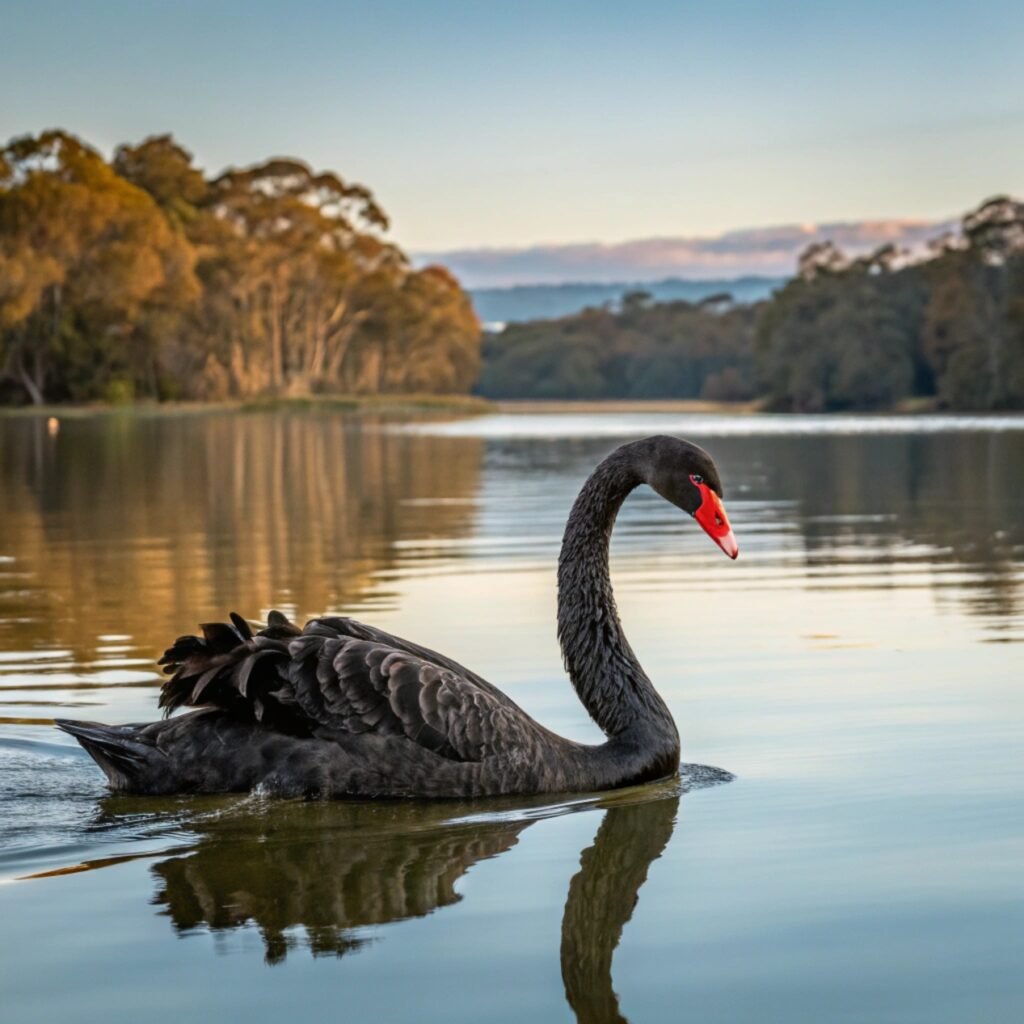
Native to Australia, the Black Swan is a unique and captivating bird species. As the only swan species that is almost entirely black, it has become an iconic symbol of Australian wildlife.
These elegant birds can be found across the country in wetlands, lakes, and rivers.
One of the most interesting aspects of Black Swans is their monogamous nature. They form strong, lifelong bonds with their mates and fiercely defend their territory and offspring.
Despite their large size, Black Swans are also strong fliers, capable of covering long distances during migration, often flying in large flocks in a distinctive V-formation.
The Emu: Australia’s Flightless Giant

The Emu, scientifically known as Dromaius novaehollandiae, is a remarkable flightless bird native to Australia.
As the tallest bird in the country, Emus can grow up to 2 meters in height and weigh up to 60 kilograms, making them a truly impressive sight.
These birds are easily recognized by their long, slender necks, small heads, and long, shaggy brown feathers.
While they can’t fly, Emus have powerful legs that are well-adapted for running. They can reach speeds of up to 50 kilometers per hour, allowing them to cover large distances in search of food and water.
The Laughing Kookaburra: Australia’s Jovial Predator

The Laughing Kookaburra is a bird species known for its distinctive call that resembles human laughter.
This unique vocalization has made it one of the most recognizable birds in Australia. Beyond its amusing call, the Laughing Kookaburra is also an impressive predator.
These birds have a unique hunting behavior. They swoop down to catch prey such as snakes, lizards, and small mammals, using their powerful beaks to hold and beat their catch against a perch.
Laughing Kookaburras are also highly adaptable, found in various habitats including forests, woodlands, and even urban areas.
The Paradise Parrot: A Cautionary Tale of Extinction

The Paradise Parrot, scientifically known as Psephotellus pulcherrimus, was once one of the most striking bird species in Australia.
With its bright green and yellow plumage and distinctive long tail, it was a true beauty of the avian world. Sadly, this species is now extinct, serving as a sobering reminder of the importance of conservation efforts.
The Paradise Parrot was highly dependent on the grassy woodlands of eastern Australia. Its extinction in the early 20th century was primarily due to habitat destruction and hunting.
Despite some unconfirmed sightings, the species is believed to be lost forever, highlighting the tragic consequences of human impact on wildlife.
The Pied Butcherbird: A Melodious Hunter

The Pied Butcherbird is a fascinating species known for its unique feeding behavior and impressive vocal abilities.
These birds have developed a distinctive hunting technique where they impale their prey on thorns or spikes, making it easier to consume. This behavior has earned them their evocative name.
Beyond their hunting prowess, Pied Butcherbirds are renowned for their melodious and complex vocalizations.
Their songs consist of a wide range of notes and tones, often used to communicate with mates or defend territory. Interestingly, these birds also engage in cooperative breeding, where offspring from previous years help their parents raise new chicks.
The Andean Goose: Master of High-Altitude Living

The Andean Goose is a remarkable example of a bird species that has adapted to life in extreme environments.
These birds are found in high-altitude mountain habitats, where harsh weather conditions and thin air make survival challenging for most species. The Andean Goose, however, has evolved to thrive in these conditions.
Living at high altitudes means dealing with cooler temperatures and lower oxygen levels.
The Andean Goose has physiological adaptations that allow it to extract more oxygen from the thin air, enabling it to survive and even breed in these harsh mountain environments. Their ability to adapt to such extreme conditions makes them a truly impressive species.
The Common Ostrich: Africa’s Flightless Giant

The Common Ostrich is the largest living bird species and a dominant presence in the African savanna.
These impressive birds can grow up to 2.7 meters tall and weigh up to 150 kilograms. While they can’t fly, ostriches have adapted to life on the ground in remarkable ways.
Ostriches possess powerful legs that allow them to run at speeds of up to 70 kilometers per hour, making them the fastest birds on land.
They use this speed to evade predators and cover large distances in search of food. Their large size and strength also make them formidable opponents, capable of delivering powerful kicks to defend themselves.
FAQs
What is the strongest bird of prey?
The Harpy Eagle is considered the strongest bird of prey, with a grip powerful enough to break human bones.
Which bird has the largest wingspan?
The Wandering Albatross holds the record for the largest wingspan, measuring up to 3.5 meters.
Are there any birds that can kill large mammals?
Yes, the African Crowned Eagle is known to hunt prey weighing up to 35 kg, including small antelopes.
What is the fastest bird on land?
The Common Ostrich is the fastest bird on land, capable of running at speeds up to 70 km/h.
Which bird species has the most complex vocalization?
The Lyrebird is renowned for its ability to mimic a wide range of sounds, including other bird calls and even human-made noises.
What is the largest flightless bird?
The Common Ostrich is the largest living flightless bird, growing up to 2.7 meters tall.
Are there any birds that hunt in packs?
While not common, Harris’s Hawks are known to hunt cooperatively in small groups.
Which bird has the strongest beak?
The Hyacinth Macaw has one of the strongest beaks in the bird world, capable of cracking open hard nuts and seeds.
What is the most venomous bird?
The Hooded Pitohui of New Guinea is one of the few known poisonous birds, with toxins in its feathers and skin.
Which bird has the longest migration route?
The Arctic Tern holds the record for the longest migration, traveling from the Arctic to the Antarctic and back each year, covering over 70,000 km.

Hello, I’m Emily Price, the founder of Birds Affection. As a passionate bird enthusiast and spiritual seeker, I’ve always been fascinated by the symbolic meanings and mystical connections between birds and our lives. On this website, I share my knowledge and insights on the spiritual significance of various bird species, exploring their roles as messengers, guides, and teachers. Through my writing, I aim to inspire and educate others on the profound wisdom and beauty that birds bring to our world. Join me on this journey as we delve into the enchanting realm of bird symbolism and discover the hidden meanings behind these magnificent creatures.

